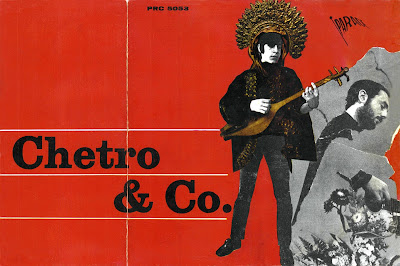Today we are going to talk about “Quella Vecchia Locanda”, an Italian rock band formed in the Monteverde district of Rome, at the beginning of the 70s. At the initial stage, the members of the group were Giorgio Giorgi - voice and flute, Raimondo Cocco - guitar and clarion, Romualdo Coletta - bass, Patrick Traina - drums, Donald Lax - violin, Massimo Roselli - keyboards and, for a short while, Carlo Mariani on piano.
The creative name of the band (That Old Inn) seems to have originated from where they initially met for rehearsals: a real decrepit inn which had been abandoned many years before. At the beginning, the band dedicated itself to live performances in the Roman pop environment creating for itself a solid reputation. The real consecration of the band came in 1972 with its performances at the Pop Concert Festival held at Villa Pamphili Park, after which it was engaged by the Help! Label.
 |
| The Villa Phampili Park Frstival (1972) |
The Help! Label
was an Italian record company established at the end of the 60s by record
producer Gianni Dell’Orso who began to produce during his experience at Parade
Records. Help! was distributed by the
Italian RCA and mainly released pop and progressive rock. Besides Quella Vecchia Locanda, he had under
contract the Procession band (from Turin) and singer-songwriter Folkaldo
also known as Franco Maria Giannini. Gianni Dell’Orso’s list of bands
included the Germans The Rattles and The Sub and Austrian Musician Eddy Korsche (known as Free Action Inc) who
turned out to be one his of closest associate.
In 1972, the debut album of Quelli della Vecchia
Locanda is released. The record is
structured as a concept album, with a constant melodic music thread crossed by
frequent symphonic passages that underline magical and fable traces connected
to the lyrics, but the most of classical hard progressive sound is never missed on this album.
There is evidence of Vivaldi’s influence, particularly
in the phrasing stage between voice and piano. It is the flute here that takes
the stage, as a reminder of Jethro Tull. Also the electric violin played by
virtuoso Donald Lax contributes to the building up of a sound that avoids clashes
with violins and pianos which could
remind us of the acid sounds of Comus (as in First Utterance) and have a more
solar and Italian range of sounds.
“Prologo” opens up the
concept album, where a classic violin excells over keyboards, guitars and
flute. The track develops in different tempos that leave space to a breezy quietness which
is crashed by a flute solo Ian Anderson style.
We again find classic violin accompanied by flute in “Un Villagio,
Un’Ilusione” which turned out to be a
classical example of progressive music played in Italy in those years.
Cocco’s
arpeggios of classic guitar accompanied by birds’ singing opens the
dreamy “Reality”, takes the listener in
a dream state. Here the sound plots get more convincing and we can find a
similarity with Premiata Forneria Marconi and Banco del Mutuo Soccorso bands. In “immagini Sfuocate” , the atmosphere we can
perceive is more rock-oriented, rythm
gets higher and the guitar of Raimondo Cocco really dominates this performance. After this
we find what I reckon to be the best
song in the album: “Il Cieco”. Inside
it, we find a flute solo that recalls My God which perfectly integrates within
the track. We can consider it hard rock but it lacks the frequent tempo changes
present on previous track.
The fusion between
the guys in “Dialogo” reaches perfection. Keyboards
are highlighted and accompany us all the way to the pleasant solo of
Giorgi’s ottavino flute. At the end we get “Verso La Locanda” and “Sogno, Risveglio e....” winding up this outstanding
work and that confirm the excellent bond
between classic and progressive rock.
Well, “Quella Vecchia Locanda” is certainly an
awesome start for the band. The genial
solutions adopted are never repetitive, pleasant and interesting to hear and very difficult to trace in other
bands, turning this album into one of
the first classics of the first Progressive Italian Rock. A last note of merit
goes to the art-work of cover which contributes
to the definition of the dreamy
story thread of the record.
Encouraged by
the warm welcome received by the album, the band intensified its
concerts, also through the participation
to the “Festival di Musica d’Avanguardia e Nuove Tendenze”. Subsequently there
was a change in the band with the exit
of virtuoso Donald Lux and the bass-guitarist Coletta, who were replaced
respectively by Claudio Filice and Massimo Giorgi. In 1974 the band conceived a second and last lp, “Il
tempo della gioia.....” but this is
another story of which we will talk about soonest.
Original Lp
Tracks list
Prologo - 5:01
Un villaggio, un'illusione - 3:53
Realtà - 4:14
Immagini sfuocate - 2:57
Il cieco - 4:14
Dialogo - 3:43
Verso la locanda
- 5:17
Sogno, risveglio
e... - 5:13






















